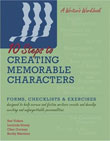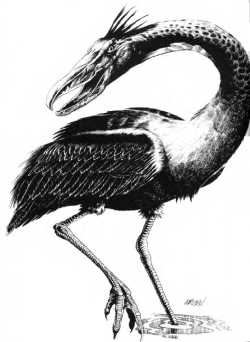Hiya, I'm trying something new out on my Fridays, and so, my articles posts gained a new name to keep them separate from other materials you'll find posted on these days. So, the first program on the The Article Channel is . . .
OUTLINES.
In particular, two ways to create a novel summary.
I have written many novels throughout the years, and in nearly every case, I started with an outline or synopsis. Usually when I talk about outlines and synopses, I allow the terms to be synonymous. In this case of this article, "outline" is a summary broken down into chapters and maybe scenes. A synopsis is a summary narrative form; the only breaks you'll see here are of the paragraph kind. But once you write one type of summary, it can transform into another with a little more work. Here are a couple of techniques that worked well for me.
Method #1: The One-Liner.
This is the technique I have been using lately. I start with my own version of
the Snowflake Method. That is, I start with one line that summarizes what my novel is about. This is not easy, but it helps focus my novel and it can be a useful marketing tool in a query packet.
Once I come up with my one-liner, my next step is the query letter blurb. Not only will this come in handy as I write, but it will be the first draft of my actual query letter. I revise it as I work on the actual drafts of my novel, and by the time I am done with my novel, that part of my submission packet is ready to go as well.
From the blurb, I expand the summary into something with a little more substance over all parts of the novel, beginning, middle, and end. I keep fleshing this out, making sure that my plot events flow until each other and that character motivations, goals, and thoughts are present wherever necessary to understand my character's actions and reactions.
Turning the synopsis into an outline: I go through my synopsis, either on a new file on the computer or on a printout, and I put little marks (like
[1]) indicating where a new chapter's material begins. Once I have gone through the entire novel this way, I separate my synopsis material by chapter tick marks and adjust wording as necessary to fit the level of detail I need for a chapter and scene summary.
Method #2. The High Points.
This idea is inspired by the whole
Act I, II, III type plotting, but again with my own twist. I use my story concept or premise, either written down or just inside my head, and start by deciding what are the high points or major events in my novel. I start with three: the one that kicks off the story after all the set up is done, the one that is in the middle, and the climax.
Once I have these three events, I go back and fill in more events between each of the major ones until I have enough to fill a novel. With some tweaking and organizing, these become chapter or scene summaries and are grouped accordingly.
These are usually only a few sentences, more focused on plot than character motivation, unlike the synopsis. However, I find it useful to post the summary of an individual chapter in the file I write the novel in before I write the actual chapter. That way I have it handy for easy reference and focus.
Turning the outline into a synopsis: I start my synopsis by copy-and-pasting my finished outline into another document file. Then, I take these brief sentences and I flesh them out, turning them into a narrative full of character motivation and goals as well as plot events. Then once I have those, I delete the chapter headings and make sure it flows like a story, like a synopsis should.
In the end, no matter which method I pick, I have a multi-functional tool. First of all, it will help me start writing. Second, it keeps my writing on track. And third, it provides the ground work for my novel submission packet.







